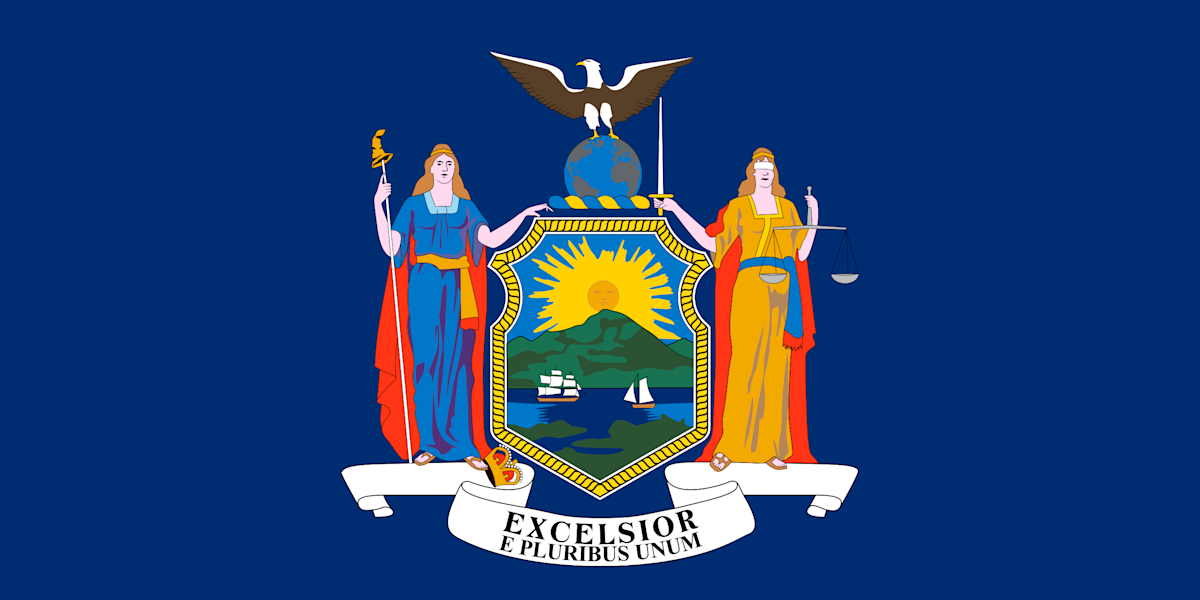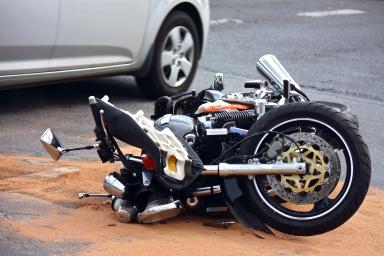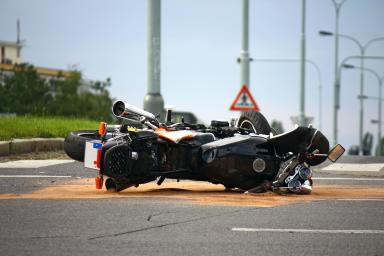New York Motorcycle Laws

New York’s roadways have seen a rise in motorcycle crashes and fatalities, with a fatal crash rate of 89 per 100,000 registered motorcycles in New York City alone. According to a press release by the New York DMV, fatal motorcycle crashes have increased by 52% in 2021 since 2019, with 201 fatal crashes recorded.
When riding a motorcycle in New York, it is necessary to learn about the most dangerous roadways, including the Taconic State Parkway with its twists and turns, Interstate 87 from New York City to Montreal, and Niagara Falls Boulevard.
Motorcycle safety has been a priority in New York for a long time, with the state being the first to mandate motorcycle helmets. It has also been operating the New York State Motorcycle Safety Program for over 20 years, teaching riders about safety tips and strategies for dealing with traffic.
New York has established different laws and regulations for motorcycle riders to maintain safe roadways, and understanding those listed below can help prevent accidents among pedestrians and other road users.
New York’s Licenses for Motorcyclists
To operate a motorcycle in New York, individuals must have a valid motorcycle operator’s license (Class M) or a motorcycle junior operator’s license (Class MJ). A motorcycle learner's permit is required to apply for a motorcycle permit.
Individuals must present proof of their age, identity, and residence, which will dictate the type of permit they can receive. The permits can be standard, enhanced, or REAL ID. Standard documents cannot be used for federal purposes, the REAL ID can be used to board a domestic flight, and enhanced IDs have a U.S. flag on the front and can be used to board domestic flights and enter the U.S. at land crossings.
The motorcycle application can be made online or at a DMV office. Applicants under 18 need a parent or guardian to supervise the test and sign an Online Permit Test Parent/Guardian Certification before a DMV representative. On the other hand, those 18 and older must sign the Online Permit Test Attestation for Applicants 18 Years of Age and Older in front of a DMV representative.
To pass the written test, applicants must correctly answer at least 14 of the 20 multiple-choice questions, including getting the correct answers to at least two of the four road sign questions and 60% of the motorcycle questions. Those who do not pass can try again, while those who pass can get their temporary permit at the office and receive the actual learner permit by mail within two weeks.
Riders with learner permits are expected to undergo at least 10 hours of practice on roads with medium- to high-volume traffic and take the New York State Motorcycle Safety Program Basic Rider Course to prepare for their motorcycle road test. The next steps are scheduling and taking a road test. Those who pass it will receive their photo driver's license in the mail within weeks, while those who fail can schedule another road test until the expiration date of their learner permit.
The M permit test is in 16 languages, including Arabic, Chinese, French, Italian, and Japanese.
New York’s Motorcycle Registration Requirements
Motorcycles in New York must be registered annually, with all registrations expiring on April 30. Each motorcycle must also be inspected at least once yearly at a DMV-licensed station with a sign reading ‘Official NYS Motorcycle Inspection Station.’ For motorcycles purchased in a private sale, owners must have the vehicle inspected within 10 days from the registration date.
The registration process starts with having the motorcycle insured and submitting the necessary documents and payments to the DMV. Some required documents include the motorcycle’s title and out-of-state registration, valid motorcycle insurance, a valid New York driver’s license, and a current safety inspection.
The registration fee is $17.50 annually, and other costs include $25 for the plate, $50 for the title certificate, and $6 for the inspection fee.
New York’s Motorcycle Helmet Law
New York was the first state to mandate the use of motorcycle helmets on January 1, 1967, and the law still applies today. Motorcycle riders must wear protective helmets that meet the requirements of 49 CFR § 571.218 of the Federal Motor Vehicle Safety Standards. Helmets with a Snell Memorial Foundation label give extra quality assurance.
Additionally, helmets must have no obvious defects, like cracks, loose straps, or frayed straps, which can likely cause them to fly off in a crash.
Police authorities in cities, towns, and villages are allowed to issue permits that exempt members of organizations from the helmet law if they conduct public exhibitions or parades.
Some riders opt not to wear helmets for short rides, but research shows that most crashes happen on trips less than five miles long and just a few minutes after starting the drive. Note that helmeted drivers are three times more likely to survive head and neck injuries than those not wearing helmets during crashes.
New York’s Eye Protection Law for Motorcyclists
Motorcycle riders in New York must wear goggles or face shields approved by the commissioner. The commissioner can also amend specifications for goggles and face shields.
Shatter-resistant face shields can help protect the rider from dust, dirt, winds, insects, and pebbles, which can distract during the drive or cause an accident. Effective eyewear must be free from scratches, give a clear view of the sides, be securely fastened, permit air to pass through to remove the fog and leave enough room for glasses or sunglasses when needed.
New York’s Required Motorcycle Equipment
There are specific equipment requirements for motorcycles in New York, following the approval of the Commissioner of Motor Vehicles.
Motorcycles must be equipped with brakes in good working order, acting on the front and rear wheels, which can stop the motorcycle on a hard, dry surface. Horns are also required.
Motorcycles need to have a muffler that prevents excessive noise. Individuals must not operate a motorcycle on any highway if it has mufflers with altered original internal parts or exhaust devices that do not have internal baffles. Those with modified exhaust systems that amplify exhaust noise are also prohibited on highways.
Other required equipment includes a speedometer, adjustable rear view mirrors, a windscreen, handlebars not above the operator’s shoulders, and a seat at least 25 inches from the ground.
The lighting devices and reflectors needed include headlamps, stop lamps, tail lamps, reflectors, license plate lamps, and turn signal lamps.
Those planning to build a homemade or custom vehicle must contact the DMV Technical Services Unit at (518) 474 5282.
New York’s DWI Law for Motorcyclists
More than 40% of motor vehicle fatalities in New York involve impaired driving. Driving While Intoxicated (DWI) laws are strictly enforced in New York, with penalties like fines, jail time, and loss of driving privileges imposed. The law covers impairment by alcohol, drugs, and the combined influence of drugs and alcohol.
New York has different designations and penalties based on the severity of the offense. Aggravated DWI is the charge for riders found to have a blood-alcohol content (BAC) of 0.18 or higher and can lead to a class E felony for a second offense within 10 years. The regular DWI and DWAI-Drug cover motorcycle drivers with a BAC of 0.08 or higher and can lead to a jail sentence of up to four years for subsequent DWIs within five years. Lastly, driving while ability impaired, or DWAI, covers riders with a BAC of 0.05 to 0.07, and the highest penalty is a fine of $1,500, up to 180 days of jail time, and a minimum six-month revocation.
Repeat DWI offenders can face lifetime record reviews by the DMV, permanent license denial, delayed re-licensing, and interlocks.
New York’s Implied Consent Law
Under New York’s Implied Consent Law, drivers have given their implied consent to undergo chemical tests of their blood, saliva, urine, or breath if they are being lawfully investigated for driving while intoxicated. Police officers can choose the most applicable test to determine the rider’s BAC.
If an individual refuses to take the mandatory test, they can lose their license for a year or be fined $500.
New York’s Zero Tolerance for Underage Drivers
Individuals under 21 in New York who are found to be driving while impaired with a BAC of 0.02 or higher will be charged with violating the Zero Tolerance Law.
The charged driver will have their license suspended for six months and must pay $100 for the suspension termination fee and $125 for the civil penalty to be re-licensed. A second violation will lead to at least one year of license revocation or until the driver reaches the age of 21, whichever is longer.
New York’s Law for Motorcycle Lane Splitting
Lane splitting is deemed unlawful on New York roads. The law states that motorcycles can use an entire lane and that no other vehicle can deprive them of doing so. It also prevents two motorcycles from riding abreast in a single lane and does not allow motorcycles to overtake and pass in the same lane as the vehicle being overtaken.
This law does not apply to police authorities who are performing official duties.
New York’s Motorcycle Insurance Requirements
Motorcycles need insurance coverage when operating on public New York roadways and highways. However, since motorcycles need to be registered annually, owners can terminate their motorcycle liability insurance without surrendering the plate.
The minimum liability insurance coverage in the state is:
$10,000 for property damage for a single accident.
$25,000 for bodily injury and $50,000 for death for one person involved in a single accident.
$50,000 for bodily injury and $100,000 for death for two or more people in a single accident.
The coverage must be issued by a company with a license from the NY State Department of Financial Services and certified by the NY State DMV.
How Much Can One Sue for a Motorcycle Accident in New York?
New York has no damage caps regarding motorcycle accident claims and other personal injury lawsuits. The amount a victim can sue for will vary depending on several factors, including economic and non-economic damages.
Plaintiffs can sue for economic damages like medical expenses, lost wages, rehabilitation costs, property damage, and loss of earning capacity, as well as non-economic damages like emotional distress, loss of life enjoyment, and pain and suffering.
Additionally, punitive damages can be considered if the at-fault party’s actions are found to be malicious, intentional, or reckless.
Another thing to consider is New York’s contributory negligence rule, where the compensation amount awarded to both parties may be reduced based on their degree of fault in the lawsuit. For example, a plaintiff found to be 20% at fault for the accident can only receive 80% of their potential compensation.
It is essential to consult a personal injury attorney to evaluate the case's specific details and offer guidance in choosing legal options.
New York’s Statute of Limitations for Motorcycle Accidents
Personal injury lawsuits related to motorcycle accidents in New York must be filed within three years from the accident date. This statute of limitations must be followed because failure to file a lawsuit within the prescribed timeframe can result in losing the right to compensation.
Claims for injury to personal property are also due three years from the accident date.
It's important for motorcycle accident victims in New York to be aware of these limitations and act promptly if they seek to pursue legal action.
Is New York a No-fault State for Insurance Claims?
New York follows the ‘no-fault’ rule for motorcycle accident insurance claims. Individuals can seek compensation, regardless of who is at fault for the accident, due to the insurance coverage required for all motor vehicles.
In motorcycle accidents, the involved party can turn to their insurance companies to cover medical treatments and economic losses. For expenses exceeding the $50,000 available under the no-fault benefits, individuals may apply for additional PIP or Federal Social Security Disability benefits.
However, at-fault motorcycle operators are excluded from no-fault benefits and can sue for the first dollar of their loss.
Is New York a Contributory Negligence State for Motorcycle Accident Lawsuits?
New York follows contributory negligence in actions to recover damages for personal injury cases, including those involving motorcycles. Under this rule, the court will consider the degree of fault of each party when determining compensation.
If the plaintiff or the motorcycle accident victim is found partially at fault, their compensation may be reduced based on their degree of fault. Even if a rider is deemed primarily at fault, they can recover damages, with the award amount reduced to reflect their level of responsibility.
Motorcycle riders and other road users involved in accidents must consult an experienced personal injury attorney to receive the compensation they deserve.
Legal Resources for New York Motorcycle Accident Victims
New York State Bar Association Lawyer Referral Service
The New York State Bar Association Lawyer Referral Service connects motorcycle accident victims with qualified personal injury attorneys who can guide them throughout the legal process and protect their rights and interests. It also offers a comprehensive resource for victims’ rights, legal options, and potential compensation.
The Legal Aid Society in New York
The Legal Aid Society in New York is a nonprofit organization providing legal representation and support to low-income individuals and families who cannot afford private attorneys. It offers different FAQs and informative articles that motorcycle accident victims can use as self-help guides to understand their cases and what they can do next.
LawHelpNY
LawHelpNY is an online platform that provides free legal resources about personal injury cases and motorcycle accidents. It also connects individuals with legal aid organizations throughout the state. The site offers access to do-it-yourself guidelines and samples for legal letters and forms for government agencies or courts.
New York Legal Assistance Group
The New York Legal Assistance Group is a nonprofit organization providing free legal services to individuals and families who cannot afford private lawyers. Motorcycle accident victims can file an online application with the details of their case, and the organization will determine their eligibility for free legal aid. Its website also includes articles on legal options and compensation.
New York Accident Report Resources
The New York DMV Crash and Accident Reports website offers access to official crash and accident reports. It shows how motorcycle accident victims and their families can report accidents, verify insurance information, and file for a copy of an accident report. Victims must be able to include details about the involved vehicles, drivers, and any contributing factors. The crash reports have essential information for insurance claims and lawsuits.
New York State’s Motorcycle Safety Program Manual
The New York State Motorcycle Safety Program Manual covers licensing requirements, equipment standards, riding techniques, and safety guidelines. It also offers information about proper gear for motorcycle riding, maintenance tips, and hazard awareness. Additionally, it lists the different laws and regulations for motorcycle riders to reduce the risk of accidents on the road.
Expertise.com StaffAuthor
Step into the world of Expertise.com, your go-to hub for credible insights. We don't take accuracy lightly around here. Our squad of expert reviewers, each a maestro in their field, has given the green light to every single article you'll find. From rigorous fact-checking to meticulous evaluations of service providers, we've got it all covered. So feel free to dive in and explore. The information you'll uncover has been stamped with the seal of approval by our top-notch experts.


![¿Cuál es la indemnización promedio de las demandas por accidentes de moto? [2023]](https://images.ctfassets.net/k00sbju4hbzq/590XSDSoqNVs6XSMNY5s3G/a969ee3bedaaf9016cec601fc30f495b/average_motorcycle_accident_settlement.jpg?fit=fill&w=384&q=75)

